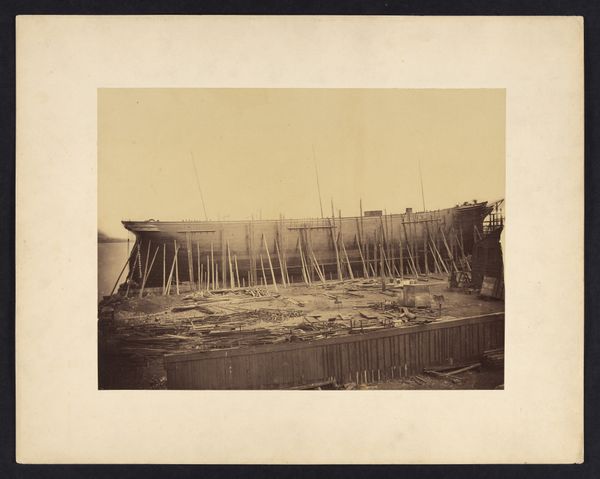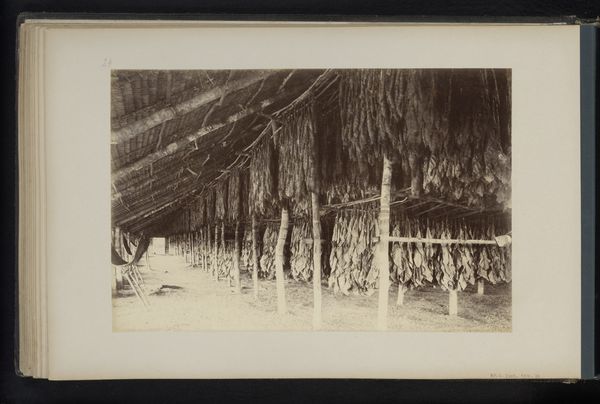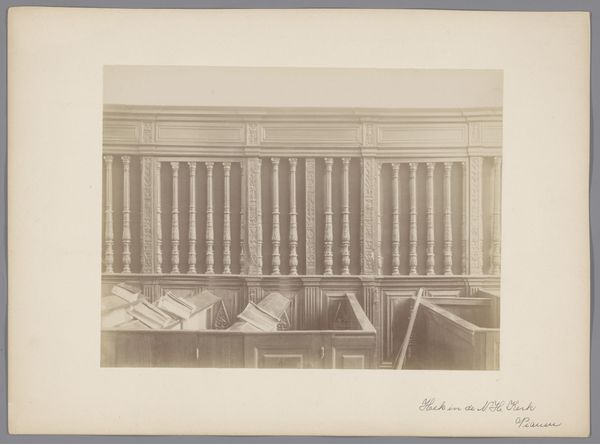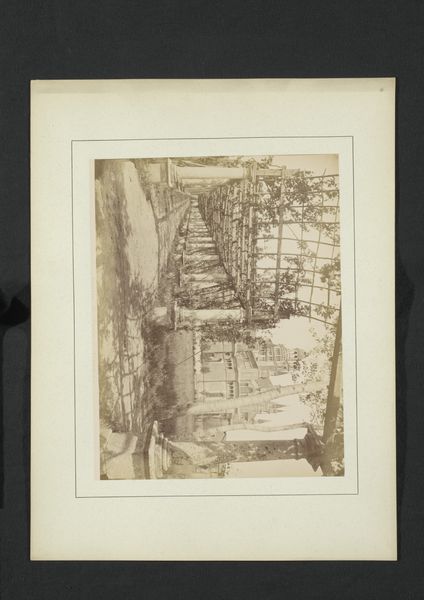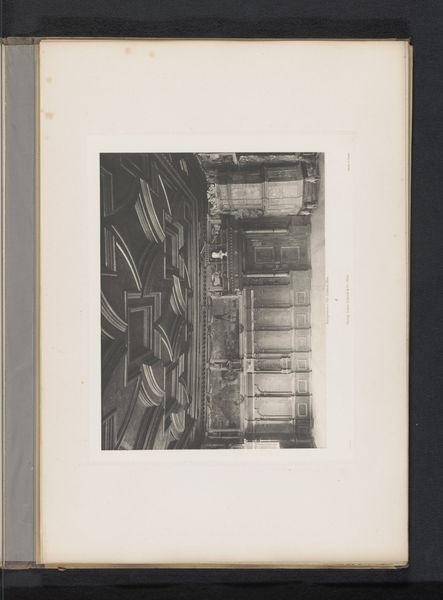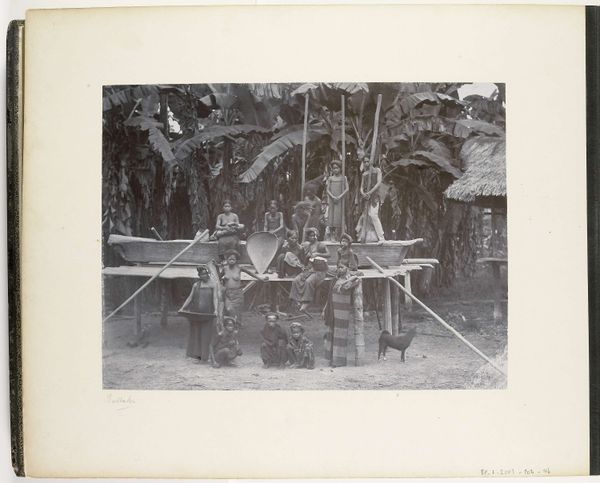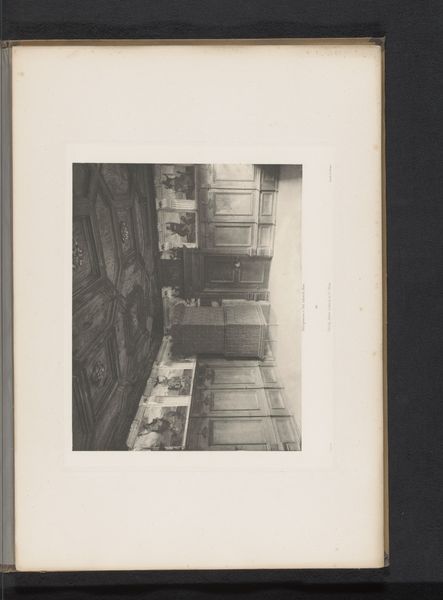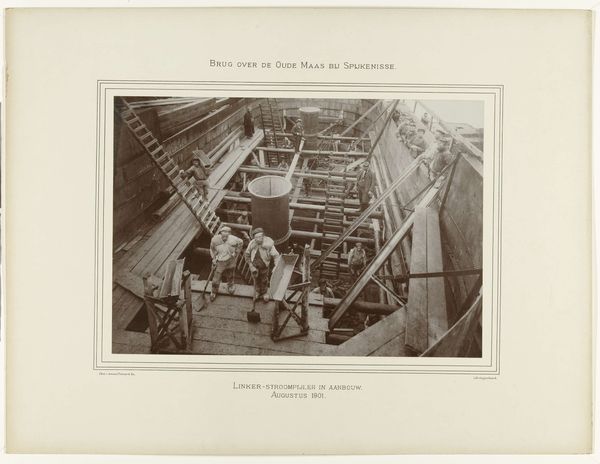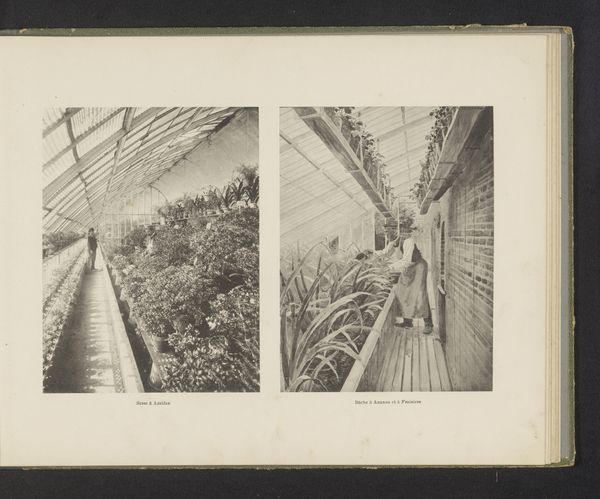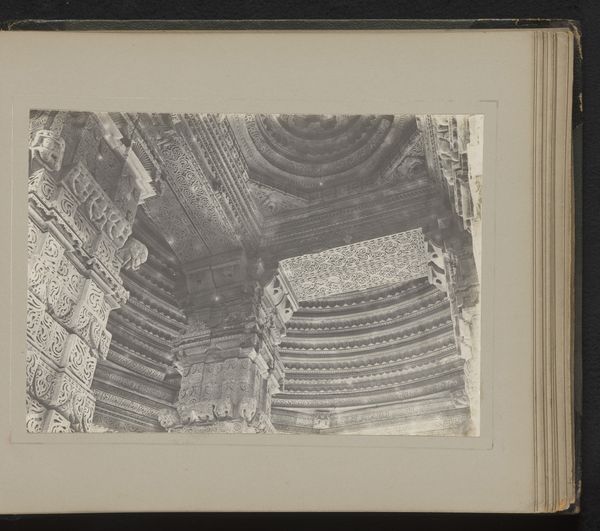
Tabak in de droogschuur, Medan Estate, Sumatra (Taback in der Trockenscheune Medan Estate) c. 1885 - 1900
0:00
0:00
photography, gelatin-silver-print
#
still-life-photography
#
pictorialism
#
landscape
#
photography
#
gelatin-silver-print
Dimensions: height 264 mm, width 341 mm
Copyright: Rijks Museum: Open Domain
Curator: Welcome. Let's turn our attention to a gelatin silver print by Carl J. Kleingrothe, created sometime between 1885 and 1900. It’s titled "Tabak in de droogschuur, Medan Estate, Sumatra"—or, "Tobacco in the Drying Barn, Medan Estate." Editor: It's immediately evocative—like stepping into a shadowy cathedral made of tobacco leaves. The repetitive lines create this intense perspective, drawing you right in, almost hypnotically. Curator: Precisely. The photograph masterfully employs pictorialism, emphasizing atmospheric effects and soft focus. Observe the arrangement of the drying tobacco, forming a structured grid that defines the architectural space. Editor: I see this incredible contrast—the rigid structure of the barn versus the organic shapes of the drying leaves. They’re almost mournful, hanging like that. It reminds me of waiting for something inevitable, and irreversible to unfold. Curator: An intriguing interpretation! Functionally, this detailed landscape reveals the industrial processes on the Medan Estate. The monochromatic palette accentuates the play of light and shadow. Consider the photograph's semiotic value; the tobacco itself can be decoded as a signifier of colonial trade and its inherent complexities. Editor: It really does raise questions about labor and resource extraction, doesn’t it? Beyond the formal analysis, though, the photograph leaves me pondering the lives intertwined with this estate. What stories hang in the air with the drying tobacco? You can almost feel it like a still life unfolding slowly in time. Curator: Indeed. It’s where pictorial aesthetics meet social and historical context in Kleingrothe’s lens. Editor: A captivating glimpse, a moment frozen in time, leaving you with so much more to think about.
Comments
No comments
Be the first to comment and join the conversation on the ultimate creative platform.
